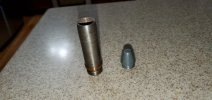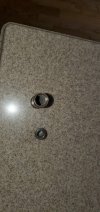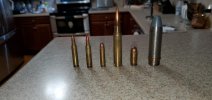The above example is not a bore rider, that is a "Driving Band" projectile for a military multiple groove barrel.
It may be the concept behind a bore rider, but it's not the same at all.
Cheers.
No, the amount of shank contacting the rifling has zero influence on twist rate, stability or terminal performance.
What it does do is change the pressure at which maximum is reached…without the bore rider section(s) the pressure would rise far faster and the velocity would be far less.
Removing friction by using a bore rider bullet, either as grooves cut into the shank, like a TSX, or using a far shorter shank at bullet diameter increases velocity without spiking pressure too soon.
Cheers.




